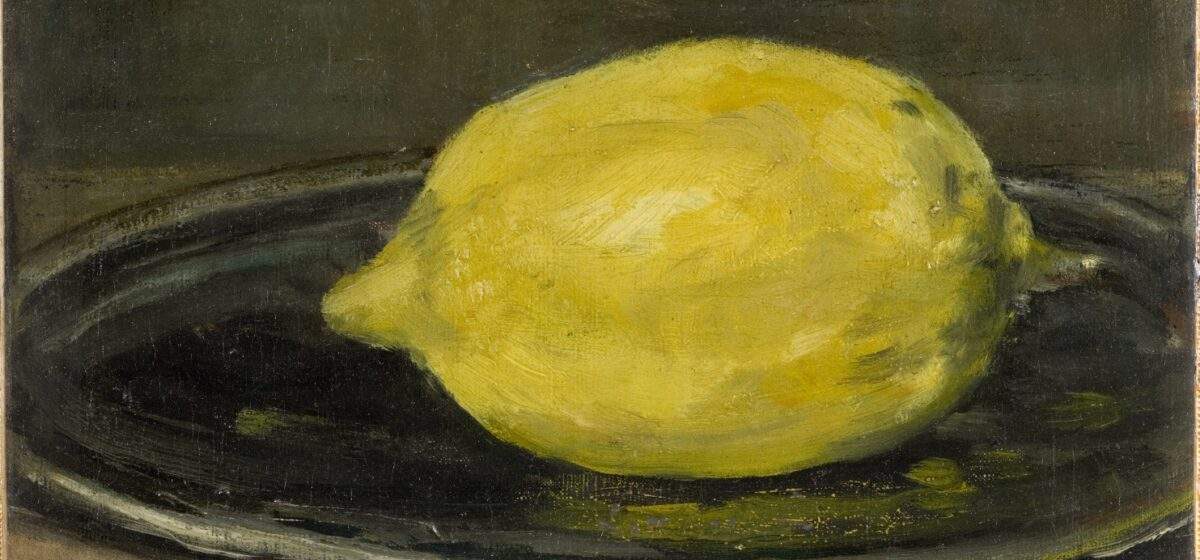From the Musée d'Orsay, �douard Manet's lemon arrives at the Villa Medici.
An iconic citrus fruit of the Mediterranean landscape, the lemon is at the center of Villa Medici’s spring program thanks to the exceptional loan from the Musée d’Orsay of the work Le Citron (“The Lemon”) painted by Édouard Manet in 1880, which will be on display for three months in the historic rooms of the Cardinal de’ Medici as the highlight of a guided tour of Villa Medici. The silent presence of the Lemon, which seems to appeal to all the senses, will be the occasion for a literary residency by French writer and philosopher Vinciane Despret, who in April will be asked to be inspired by this fruit.
In the 16th century, orange, lemon, melangoli and cedar trees grew in abundance in the vast garden of the estate purchased in 1576 by Ferdinando de’ Medici. Carefully cultivated by gardeners to preserve their size and taste, the citrus fruits supplied the cardinal’s table, while the flowers and peels were candied, marinated or made into fragrant oils and distilled in the palace’s foundry. It was particularly the citron, or mala medica, that was cultivated for its pharmacological virtues, which relieved fevers and acted as an antidote against poisons. Today, the precious citrus fruits are evoked by visitors to Villa Medici when they contemplate the frescoed vault of the bird room, Ferdinand’s private study.
From Rome to Paris, from one citrus passion to another: three centuries after the birth of Ferdinand de’ Medici’s citrus grove, Édouard Manet (Paris, 1832-1883) painted The Lemon. Despite its modest size (14 x 22 cm), the painting is one of the painter’s most powerful still lifes, claiming his ambition to become the "St. Francis of still life." The painter isolated the yellow-toned fruit on an understated black glazed ceramic saucer that enhances its key elements: the bright color, the grain of the peel, and the simplicity.
In 2024, the French Ministry of Culture and the Musée d’Orsay are celebrating 150 years of Impressionism. In parallel with the exhibition Paris 1874. Inventer l’impressionnisme (Paris 1874. Inventing Impressionism) to be held in Paris, some 180 works exceptionally on loan from the Musée d’Orsay will be on view in more than 30 French museums.
Manet’s Le Citron will thus take center stage at Villa Medici, reconnecting with the Medici family’s passion for citrus fruits.
For all information, you can visit the official website of the Academy of France in Rome - Villa Medici.
Photo: Musée d’Orsay, Dist. RMN - Grand Palais/PatriceSchmidt
 |
| From the Musée d'Orsay, Édouard Manet's lemon arrives at the Villa Medici. |
Warning: the translation into English of the original Italian article was created using automatic tools. We undertake to review all articles, but we do not guarantee the total absence of inaccuracies in the translation due to the program. You can find the original by clicking on the ITA button. If you find any mistake,please contact us.





























